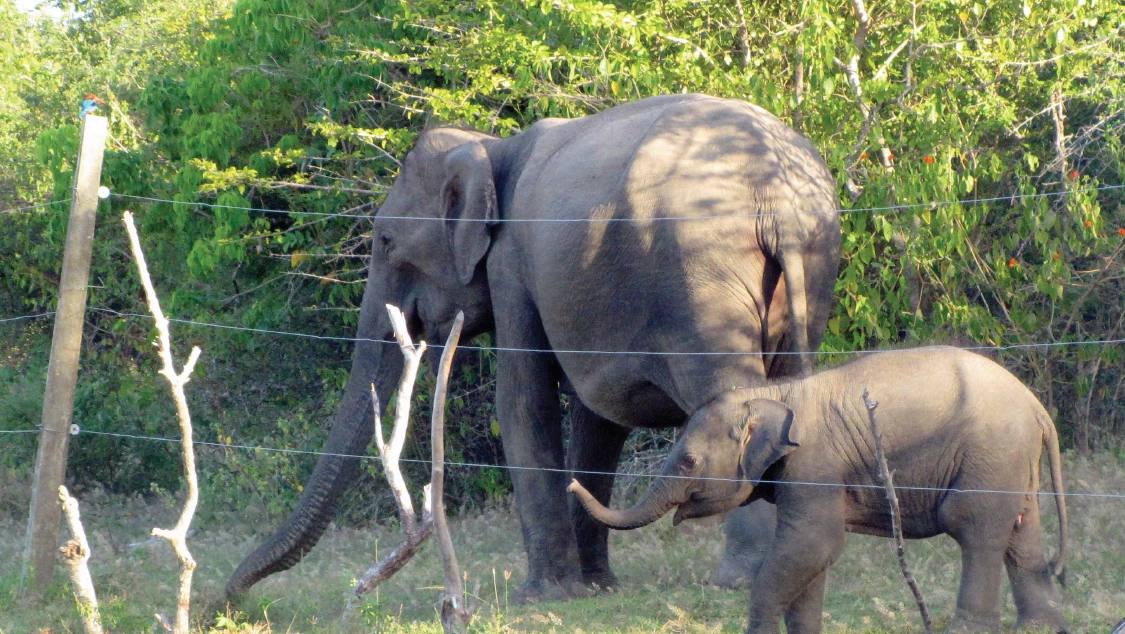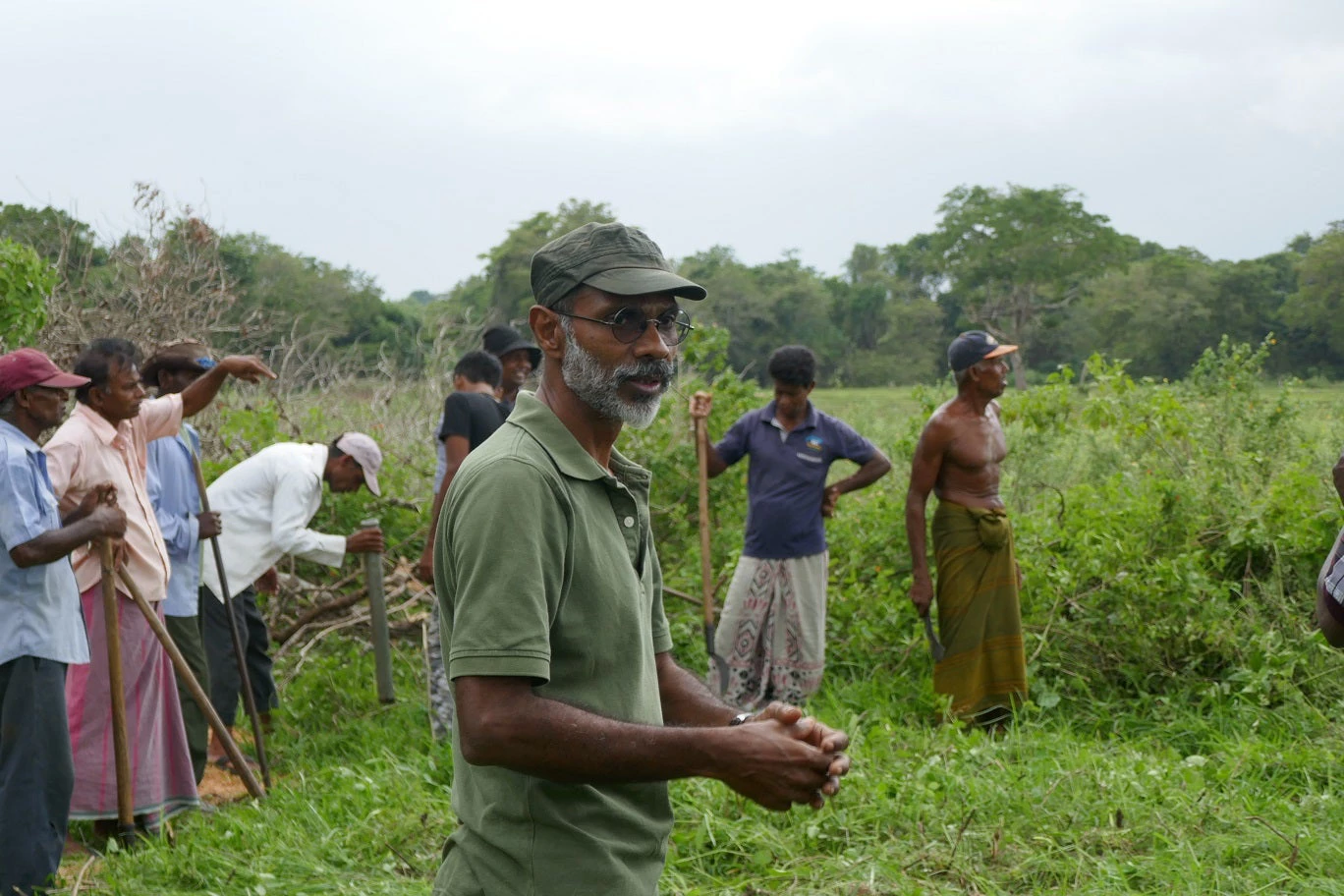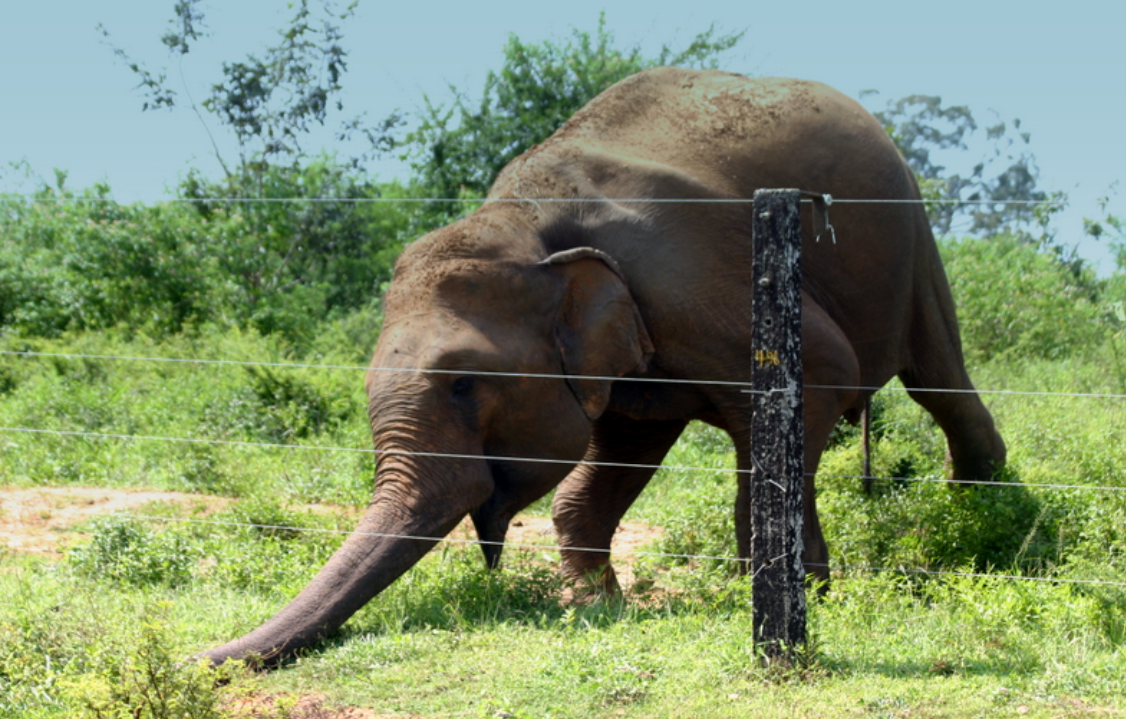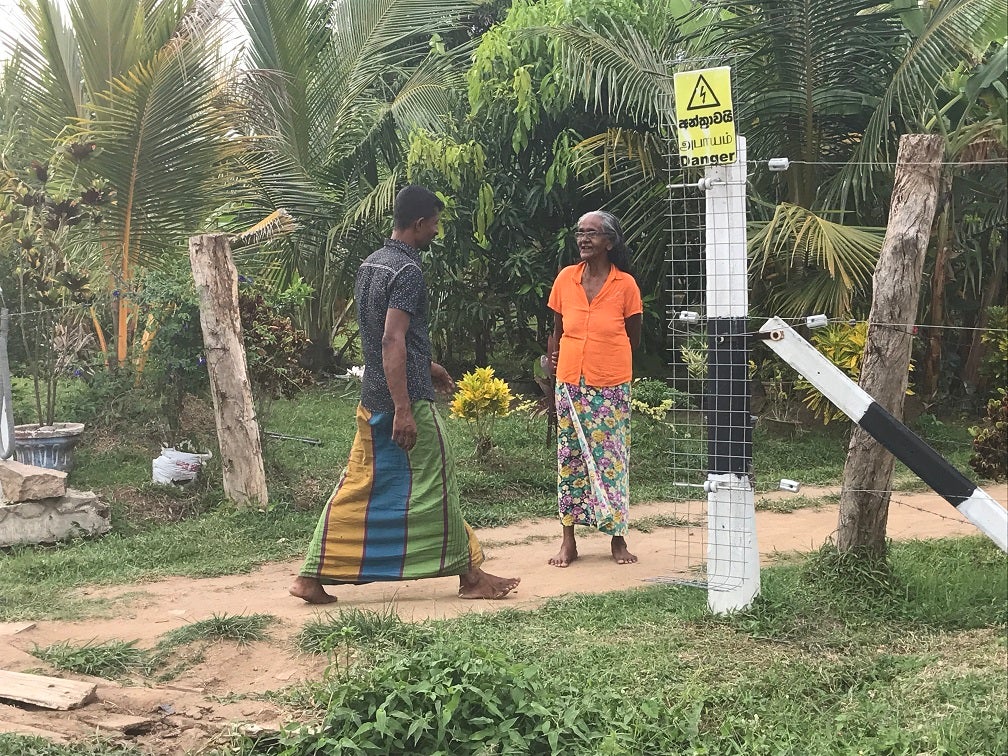
The members of the community in the Bulugolla village in Sri Lanka breathed a sigh of relief. It was the month of October and the rice harvest had gone well. The rains had been plentiful and their meddlesome neighbors (seen in picture above) were abiding by their boundaries. This has not always been the case.
As the head of the village explained, “We depend upon a rice harvest to earn our livelihood. While we culturally and traditionally have lived in harmony with elephants, we cannot survive without our paddy farms and so we have to keep the elephants out”.
Human wildlife conflict is currently one of the greatest conservation challenges. As human populations grow, wildlife habitat shrink and humans and wildlife come in contact with each other as they compete for resources. In addition, wildlife such as elephants cannot be limited to the boundaries of protected areas as many protected areas can only support a certain number of elephants. In Sri Lanka, most elephant live outside protected areas amidst paddy fields, community villages, highway railways and other development infrastructure that is intended to support the growing human population. Conflict is inevitable but failure to reduce it will result in extinction of wildlife species.
A delegation of 17 government representatives from 13 countries across Asia and Africa travelled four hours from Colombo to Kapugama as a part of the Global Wildlife Program (GWP) to learn how to reduce human elephant conflict (HEC). The aim of the GWP is to facilitate knowledge events such as this study tour to help government representatives and project managers learn from a variety of successful conservation efforts and approaches adopted around the world.

Dr. Fernando from the Center for Conservation and Research ( CCR) [pictured above] demonstrated an ingenious concept of the seasonal paddy field fence which is set up during the cultivation season to keep the elephants from raiding the crops and on the day of the harvest, the fence is taken down leaving the leftovers on the paddy fields for the elephants to consume. This coexistence method was piloted by the CCR in collaboration with the communities in Sri Lanka and has proved to be successful in mitigating HEC during harvest season.
Patrick Ollomo has come with two of his colleagues from the National Parks Agency in Gabon to learn from Sri Lanka’s experience in utilizing electric fences. They plan to take recommendations from this study tour and apply them in a World Bank led project on human-elephant conflict in the south of Gabon. Through this interaction with community members in Sri Lanka, they learned that the success of an electric fence and its life-time depended on three criteria: its location, specifications and maintenance. Erroneously, electric fences are erected around protected areas and reserve forests, dividing elephant home ranges and warranting the elephant to break the fence [pictured below].

Government representatives of National Parks from Cameroon, Malawi, Zambia and Vietnam were keen to learn how a local organization like CCR had engaged local communities in working together to promote coexistence. They were concerned that some of the poorest communities in their countries lived around protected areas and bore the costs of living with wildlife. For these vulnerable communities, the government had to take responsibility but this was not a sustainable option.
In the case of electric fences in Sri Lanka, CCR found that when governments erected fences without engaging communities, the fences were not maintained regularly and eventually, elephants found their way around it or across it. To overcome this issue, a “Fence Committee” was created in each village which coordinated the fencing program to protect the village. The communities provided all the labor and about 10% of the fence material. Each household contributed a monthly fee to a fund that helped maintain the village electric fence [Community-based fences pictured below] surrounding villages where elephants routinely crossed into human settlements and were likely to damage property or injure members of the community. This common fund was utilized to maintain the fence in the long term and members of the same community were employed to monitor the fence, creating a strong sense of ownership and making the fence effective and sustainable.

The GWP is thankful to community members from the Bulugolla village, Dr. Fernando from CCR and Dr. Sumith Pilapitiya for facilitating this valuable experience.
To learn more about the Center for Conservation and Research and Dr. Fernando’s work on electric fences, please visit: http://www.ccrsl.org/
To learn more about the Global Wildlife Program, please visit: http://www.worldbank.org/en/topic/environment/brief/global-wildlife-program


Join the Conversation